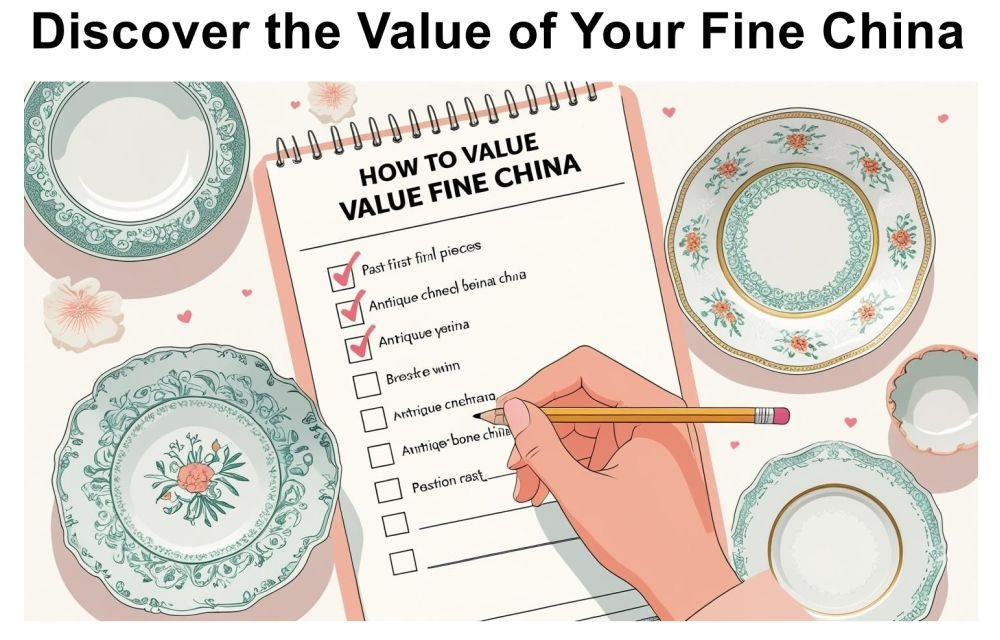Imperial Crown China Germany - Pottery Mark Query
by Kate
Imperial Crown China Germany - Pottery Mark Query: My photo is of the porcelain mark of a piece that I've had for quite a while {edit:- the central photo of the green double P is the one Kate sent in, the other two either side have been added by Peter for comparison}.
I've done a lot of research and posted on forums, and have been unable to find any information about it, and was hoping you might have some insight into the Imperial Crown China Germany pottery mark.
Thank you for your consideration, and I hope you can help me.
Take care,
Kate
================================
Reply from Peter (admin) below - just scroll down
 |
Reply by Peter (admin)
To:- Imperial Crown China Germany - Pottery Mark Query:
Hi Kate
{Edit. Feb 2009:- Since writing my original reply a few years back we have had further information, we now know the answer to the 'double P' Bavaria mark, so please ignore my original remarks on this mark below. The other info I gave in my reply remains valid. See here for the reply about the green Imperial backstamp CLICK HERE FOR THE ANSWER TO WHOSE POTTERY MARK IS THE GREEN DOUBLE "P" IMPERIAL GERMANY POTTERY MARK}.
Hi Kate
Thanks for entrusting me with your tricky query. I always try to identify a pottery mark for visitors if I possibly can.
Your particular green ‘Imperial’ pottery mark is undocumented in any books that I have. Remember, I am not an expert appraiser. However, I can give you an opinion, and by looking at the evidence, make an educated guess by using the clues.
There were several Germanic porcelain makers who used the ‘Imperial’ trade mark or brand name. Most notable are ‘Imperial Crown China, Austria’ (see above photo) who used an entirely different mark to the one on your piece.
This ‘Imperial Crown China, Austria' backstamp was the pottery mark of a decorator and importer as distinct from a manufacturer. It was the mark of Bawo and Dotter who basically decorated blanks at their studio in Fischern which was then in a region known as Bohemia now called Rybáře, Carlsbad in the Czech Republic. However, their main office was in New York and they also had a decorating plant in Limoges. They were founded c.1883 and went on until c.1914. These Imperial Crown Austria porcelain wares are highly collectible and one plate can fetch on the region of $20 USD.
The other maker was ‘Imperial Wessel’ (Ludwig Wessel), Poppelsdorf, Bonn, 1755 - 1970. They made faience wares as well as luxury porcelain and also utility wares. Your green mark is unlike any of the porcelain marks of Imperial Wessel, and I have seen over 50 examples.
Another maker using the term "Imperial" with a crown was Haas & Czjzek of Horní Slavkov, Czech Republic, previously the town of Schlaggenwald, Bohemia, Austria.
Germanic makers using the name "Crown Imperial" or similar are actually paying homage to world renowned original Austrian maker Royal Vienna (the one true Imperial company of Europe), one of the original hard-paste European innovators back in the 18th Century. There is no association - just glory seeking by association, if you get my drift....
On ebay the various wares with your type of green double P pottery mark sell for very little money, I'm afraid. To see the wares I found go to my China Replacement page and follow the link to a specially coded page, following my instructions on how to search for your particular line.
Also there is something not quite right with several things with the green Imperial pottery mark wares. As I said, I found several items all by this maker - everything from cookie jars, to tea set trios etc - mostly with a signature saying “De Bec” and a stamp saying “hand decorated” all of which suggests to the casual observer the item is hand signed and hand painted porcelain ware – making it high value.
However, “hand decorated” does not mean “hand painted”. All china is hand decorated to some extent – litho prints are mostly put on by hand. As far as I know the “De Bec” signature may be a transfer print too. True "hand painting" is rare and can be genuinely valuable, depending upon whose work it is.
To me these items are likely relatively modern repros in the style of Prussian/Bohemian porcelain. They have chosen the name 'Imperial' because of its association with older, renowned and and now defunct and highly collectible makers, hoping to bask in their reflected glory, perhaps.
Those are my thoughts, but I may be totally wrong. To get them verified by an expert appraiser, feel free to click on the following link which takes you to a page I've written especially to help visitors to my site research their wares:
www.figurines-sculpture.com/antique-china-values.html
This unique identification & valuation resource allows you to see if the mark is identifiable by experts without you having to pay any money upfront. My service is unique online and is designed to protect my site visitors from wasting their time and money online.
Really hope all this helps.
Best regards,
Peter (admin)
p.s. The following page is a 'must see' if you are researching fine china - for value and identification:-
Researching the identity and value of antique and vintage fine china.
Please post comments below which you think might be helpful……
Comments for Imperial Crown China Germany - Pottery Mark Query
|
||
|
||
|
||
|
||
|
||
|
||
|
||
|
||
|
||
|
||
|
||
|
||
|
||
|
||
|
||
|
||
|
||

Inherited a china set?... Download my free 7-point checklist to instantly assess its potential value.
From the Studio
• Peter Holland Posters
• Sculpture Studio

